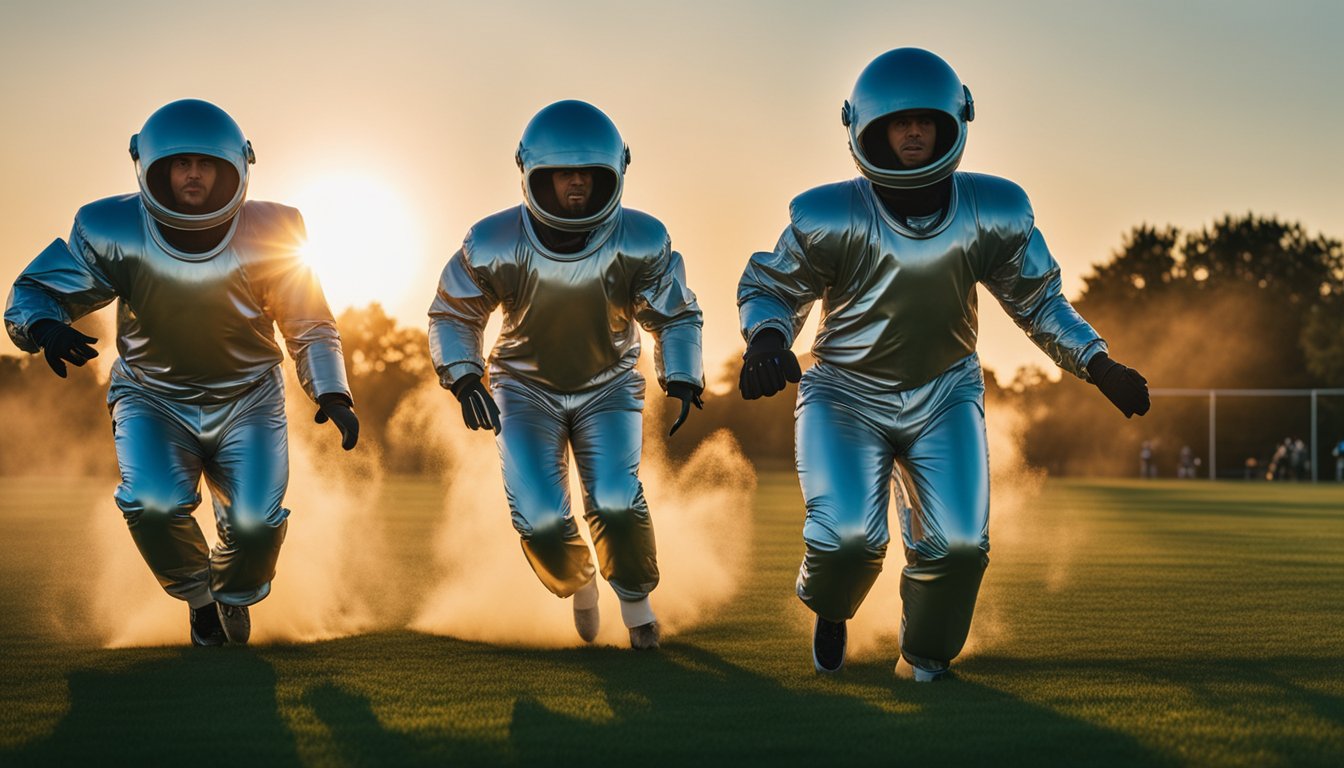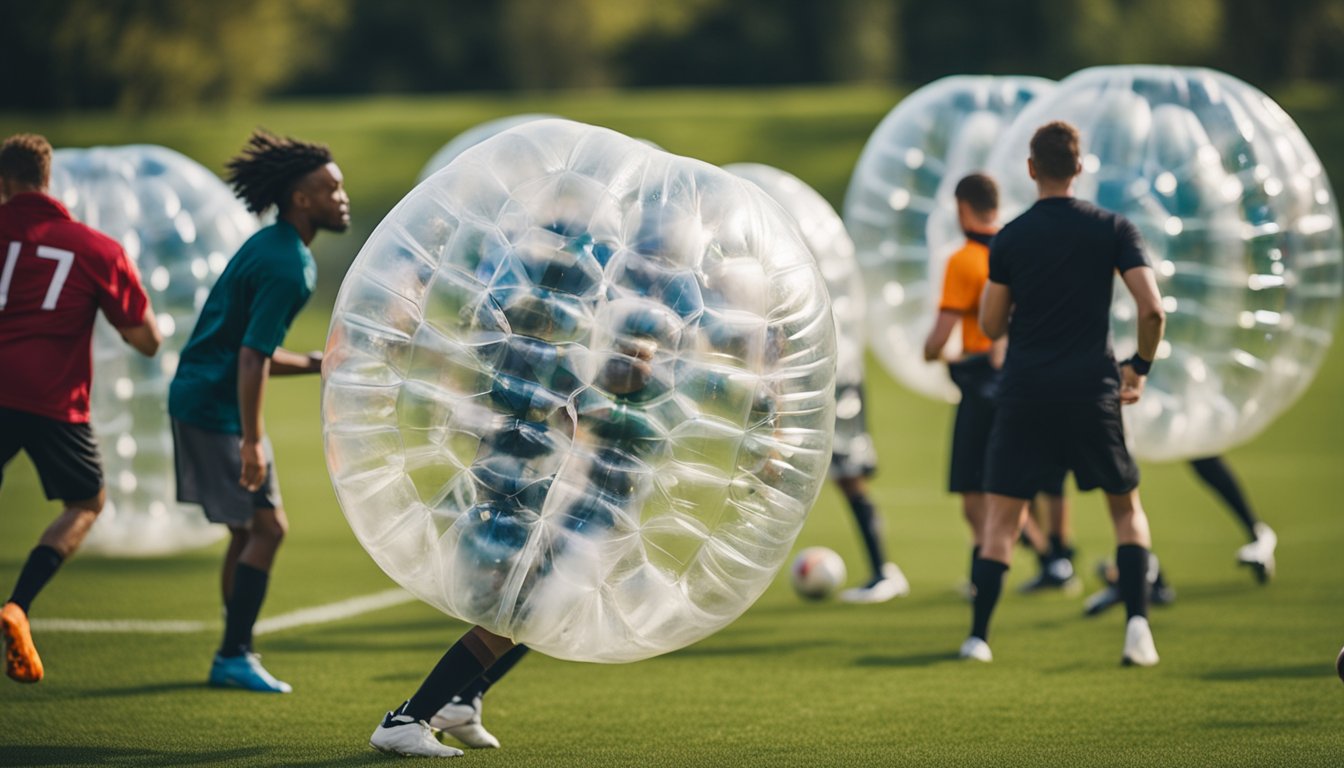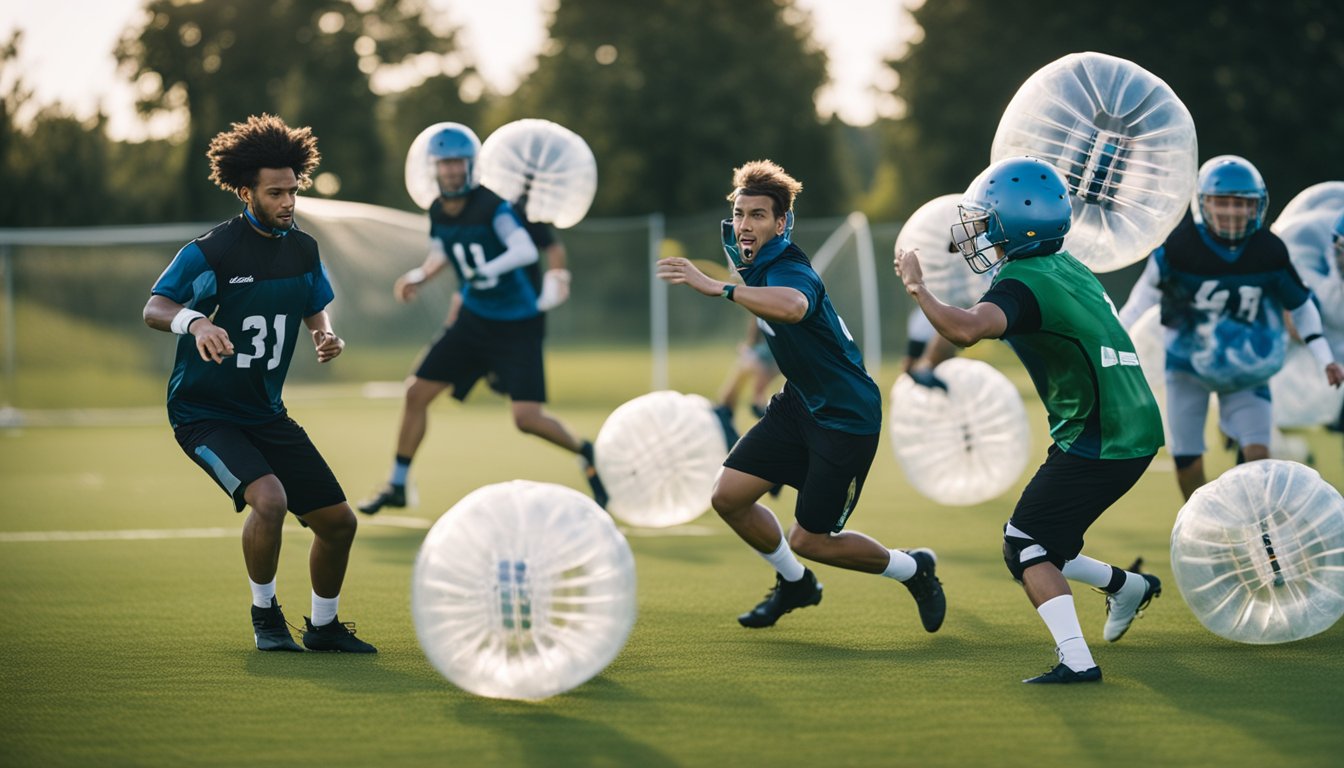Late updated: 25 Oct 2024 09:10
Written by: Emma Saunders
Bubble Football Photography Tips For Beginners: Capturing Action Shots
When it comes to capturing the unique spectacle of bubble football, selecting the right settings and understanding dynamic shooting techniques are key. This variant of the beautiful game offers endless opportunities for photographers to encapsulate fun and laughter, as players collide and tumble in oversized, inflatable bubbles. The challenge for us lies in freezing these moments with clarity and energy, ensuring each photograph tells its own vibrant story.

As amateur photographers eager to improve our skills, there are essential tips we must consider. Ensuring the correct camera settings, such as using a fast shutter speed, is crucial to capturing the fast-paced action without sacrificing image sharpness. Emphasising the composition of each shot not only adds context but enhances the storytelling aspect of our photography, setting our work apart.
Mastering bubble football photography is about more than just technical prowess; it's about anticipating moments of spontaneity and capturing them in a way that resonates with viewers. Whether it is a perfectly timed hit or a player's exaggerated fall, these instances can create captivating images that effectively convey the exhilaration of the game.
Key Takeaways
- Optimise camera settings for dynamic action.
- Focus on composition to enhance storytelling.
- Anticipate and capture unique, spontaneous moments.
Mastering the Camera Settings

Achieving perfect shots in bubble football photography demands an understanding of key camera settings. We need to focus on exposure, utilise effective focusing techniques, and consider the pros and cons of different lenses.
Understanding Exposure
To capture the thrilling movement in bubble football, we prioritise the right exposure settings. Shutter speed is crucial here; a speed of 1/1000th of a second is recommended to effectively freeze action. This ensures that the dynamic motion is captured clearly without any blur.
Incorporating aperture priority mode allows us to control depth of field, often working well with an aperture setting between f/2.8 and f/5.6 for vibrant images. This balance aids in maintaining the sharpness against the vibrant backdrop of the game. For lighting variations, opt for Auto ISO to ensure images are properly lit whether indoors or outdoors. An Auto ISO setting helps adapt quickly to changes in lighting, offering flexibility during a fast-paced match.
Focusing Techniques
Focusing accurately in a dynamic environment like bubble football is essential. Continuous autofocus (C-AF) is a vital tool, effectively tracking and maintaining focus on fast-moving subjects.
Anticipating the action lets us adjust focus as needed; ensuring the lens follows the rapid movements of players. Adding to this, lens drive mode settings can be set to medium-high burst mode. This provides multiple frames per second, increasing the chances of obtaining a sharply focused image.
Utilising the capabilities of a mirrorless camera can enhance focusing speeds and accuracy. Their advanced autofocus systems can lock onto players with speed and precision, making it easier to capture crystal-clear action shots.
Advantages of Using Different Lenses
Understanding the benefits of varied lenses can greatly enhance our bubble football photography. A telephoto lens allows us to capture close-up action from a distance, emphasising players’ expressions and details.
A lens with a longer focal length can increase the impact of the shot, as it magnifies distant scenes. For more artistic shots, consider using a lens with a shallow depth of field. This effect highlights specific players or motions, blurring the background for a focused and dramatic scene.
While typically used for different purposes, a macro lens might offer interesting perspectives for close-up shots of the equipment or field textures, showcasing unique details that add depth to our photographic story.
Composing and Capturing the Action

Navigating bubble football photography requires a blend of creative composition, solid equipment handling, and adeptness with changing lighting conditions. The dynamic environment of bubble football offers a great opportunity to sharpen these skills.
The Art of Composition
Composition in sports photography, especially with the whimsical nature of bubble football, is crucial. We can start by applying the rule of thirds—imagining a grid on our viewfinder can guide us to place subjects more dynamically. Placing players off-centre can invoke movement and draw the viewer in.
Angles are just as important. By crouching low or finding a higher vantage point, we introduce fresh perspectives. This can dramatically enhance compositions. As we focus on the inflatable bubbles, catching the glint of sunlight might offer unique, playful shots.
Effective Equipment Handling
To keep up with the fast-moving action of bubble football, mastering our equipment is essential. Opt for a fast shutter speed, ideally 1/500 or faster, to freeze those exciting moments. Engaging the camera's continuous shooting mode ensures we capture a series of movements, offering more chance at the perfect shot.
A sturdy monopod or tripod can help stabilise our shots. Given the varied motion of bubble football, keeping the camera steady is vital. High-capacity memory cards provide the buffer needed to shoot continuously without interruption.
Adjusting to Lighting Conditions
We often face shifting lighting scenarios, from natural daylight to artificial floodlights, when photographing football. Evaluating the scene's light is key. For natural light, mornings and late afternoons provide softer, flattering light. However, midday may require us to adjust exposure settings to avoid harsh shadows.
When working under floodlights or backlighting, we may need to adjust the ISO settings higher to maintain clarity without sacrificing detail. If shadows pose an issue, post-processing can help refine the photos. Correcting misbalances and enhancing colours encourage the final image to truly pop.
Frequently Asked Questions
In bubble football photography, selecting the proper camera settings, using a fast shutter speed, and understanding the unique challenges of shooting bubbles are essential. We also explore tips for successful shoots and smartphone photography techniques, ensuring even beginners can capture stunning images.
What settings should I use for capturing high-quality football game images?
To capture clear and dynamic images during a bubble football match, we recommend using a fast shutter speed around 1/1000 to 1/2000 of a second. This helps freeze the action and avoid motion blur. Additionally, adjusting the ISO to a higher setting, like 800 or 1600, can be beneficial in low-light conditions. An aperture of f/4 to f/8 ensures a good depth of field, keeping multiple players in focus.
How can one achieve a fast shutter speed when photographing bubbles?
Achieving a fast shutter speed requires the right camera settings and conditions. We suggest using a camera with manual mode capabilities. Set the camera to shutter priority mode if available, allowing control over the speed while the camera adjusts the aperture automatically. Adequate lighting is vital; consider shooting during the day or in well-lit areas to maintain image clarity.
Can you provide tips for conducting a successful bubble photo shoot?
Preparation and planning are key. We recommend checking the location beforehand to ensure sufficient space and lighting. Use a lens suited for wide angles to capture more of the scene. Direct the players on what kind of activities will create dynamic photos, like jumping or bouncing. Continuous shooting mode can help capture multiple images in quick succession, increasing your chances of getting the perfect shot.
What is the ideal mixture for creating bubbles suitable for photography purposes?
Creating vivid, long-lasting bubbles requires the right mixture. We suggest a combination of water, dish soap, and glycerin. Start with six parts of water, two parts dish soap, and one part glycerin. The glycerin makes the bubbles more durable and reflective, making them stand out in your photos. Allow the mixture to sit for a few hours before use for best results.
What are the best practices for taking bubble photographs using a smartphone?
Smartphone photography of bubbles can yield impressive results with a few tweaks. We advise using the burst mode to capture rapid sequences. Apps that allow manual control over shutter speed and focus can simulate professional settings. Ensuring the phone's camera lens is clean will enhance clarity, and employing a tripod can help stabilise shots.
Could you offer any professional advice for beginners in bubble football photography?
Beginners should focus on understanding the basics of composition and lighting. Engaging with the players to capture genuine expressions and movements often results in more compelling images. Experimenting with different angles and perspectives can also add an artistic touch. Lastly, reviewing the photos after a session and noting areas of improvement will hone skills over time.
